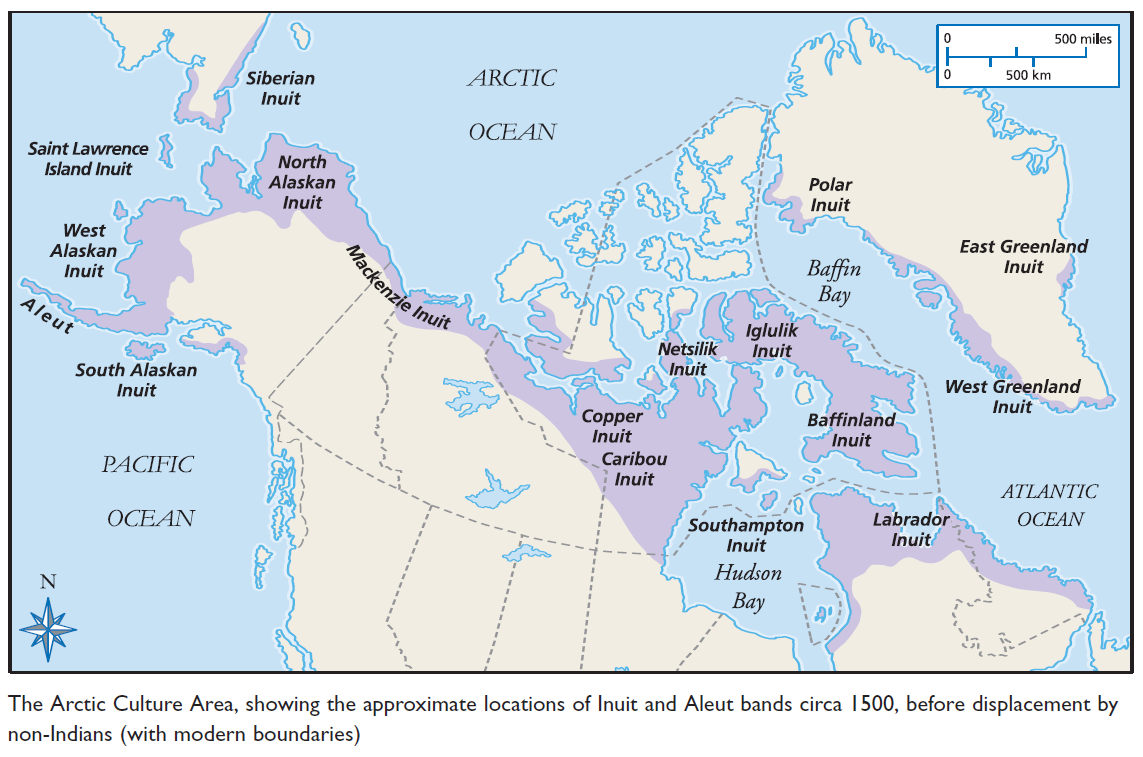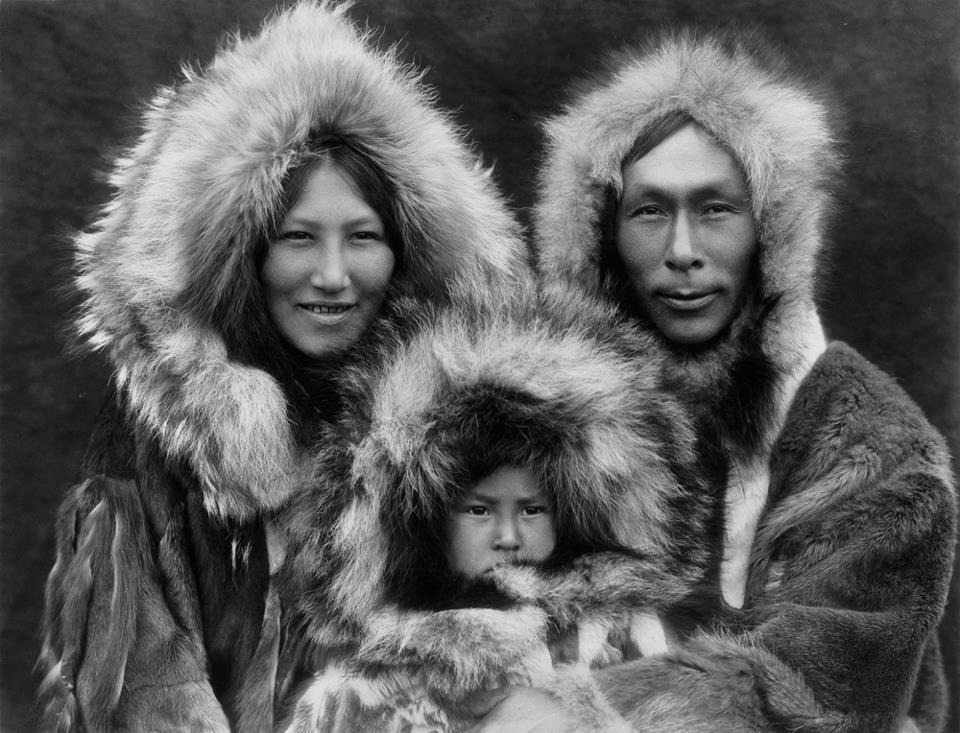 The Arctic Culture Area spans over 5,000 miles, from the Aleutian Islands in present-day Alaska to Labrador in Canada, encompassing northern Alaska and Canada, Siberia in Russia, and Greenland in the Kingdom of Denmark. The region touches on the Pacific, Arctic, and Atlantic Oceans. The Arctic climate is harsh, with long, cold winters and minimal daylight. In the far north, the Sun never rises above the horizon during part of winter, and never sets below it during part of summer, resulting in the midnight sun phenomenon.
The Arctic Culture Area spans over 5,000 miles, from the Aleutian Islands in present-day Alaska to Labrador in Canada, encompassing northern Alaska and Canada, Siberia in Russia, and Greenland in the Kingdom of Denmark. The region touches on the Pacific, Arctic, and Atlantic Oceans. The Arctic climate is harsh, with long, cold winters and minimal daylight. In the far north, the Sun never rises above the horizon during part of winter, and never sets below it during part of summer, resulting in the midnight sun phenomenon.
The land is covered in ice during the long winter, and the subsoil remains frozen year-round, known as permafrost. During the brief summer, the surface ice melts and forms lakes and ponds, with rising fog. The Arctic Ocean freezes in winter and breaks into drift ice during summer thaw. It is a frozen desert with little precipitation, and blizzards stir up snowdrifts with gale-force winds.
The Arctic's treeless tundra is covered mainly in mosses, lichens, and stunted shrubs due to the cold climate and permafrost. Rolling plains dominate most of the tundra, while the western region has mountains, the northern Rockies. The Arctic's wildlife includes sea mammals, fish, birds, polar bears, and caribou, providing subsistence for Arctic peoples, who relied on hunting and fishing for survival.
Arctic peoples migrated from Siberia in boats, starting around 2500 B.C., whereas other Native peoples crossed the Bering Strait land bridge. They are generally shorter and broader than other Native North Americans, with rounder faces, lighter skin, and epicanthic eye folds typical of Asian peoples. Therefore, they are usually not referred to as Indians, but instead as Native peoples or Arctic peoples.
 Arctic peoples include the INUIT and the ALEUT.The
Inuit formerly were called Eskimo, a name applied to
them by ALGONQUIANS and meaning “eaters of raw
meat.” Inuit means “the people.”
Arctic peoples include the INUIT and the ALEUT.The
Inuit formerly were called Eskimo, a name applied to
them by ALGONQUIANS and meaning “eaters of raw
meat.” Inuit means “the people.”
The Inuit and Aleut shared language (the Eskimaleut, or Eskaleut, language family) and many cultural traits. But there were differences too. For instance, the Aleut did not construct snow houses (igloos), as many Inuit peoples did.
The various subdivisions of the Inuit and Aleut, along with their respective cultures and histories, are discussed in detail under their respective entries.